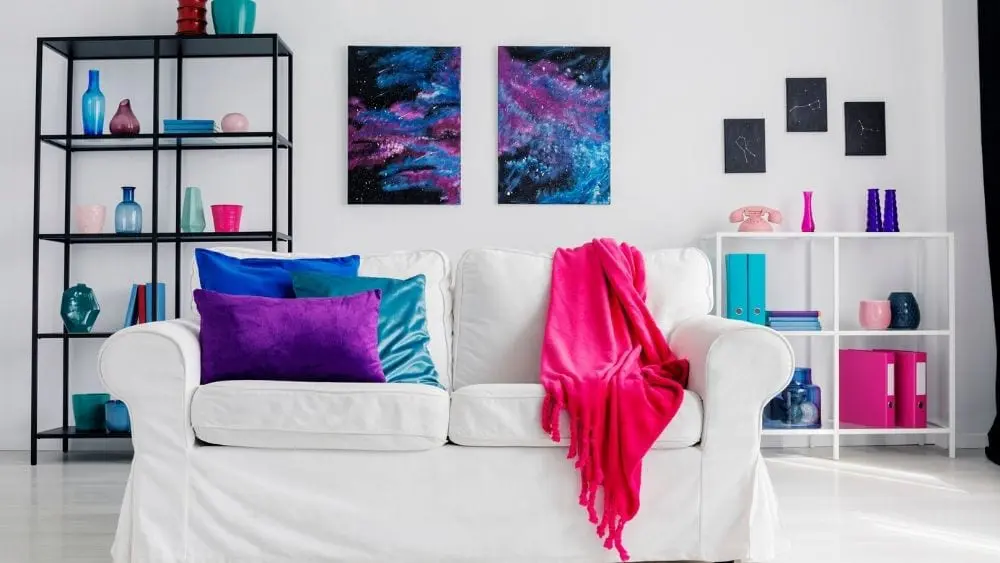
“Small is the new big,” quipped Mollie Carmichael, a principal at John Burns Real Estate Consulting during a recent webinar for builders and designers on maximizing square footage.
While tiny houses are getting lots of attention, the desire for more efficient smaller homes extends beyond consumers interested in a 400-square-foot micro-unit. “There is no question it crosses over to all age groups. If you could do more with less and it’s more affordable, then you could afford more things in your life,” observed Carmichael, noting that consumers want homes to look good and they want luxury and all the things that go with that, but simplicity is most important.
Even though recent data shows new homes are getting larger, experts say the trend is a function of who is buying rather than a change in consumer values. And as Millennials step up to homebuying, expectations are that home sizes will go down. Already, builders are incorporating features and floor plans that make today’s 1,500-square-foot home live a lot larger than a comparable-sized home from, say, 10 years ago.
It begins with details, details, details. “Attention to detail makes small home lives larger. You have to maximize every inch of a plan,” says Doug Smith, national director of architectural services for Pulte Group’s Homebuilding Operations. Builders such as Pulte are looking to baths, kitchens and spaces under and around stairways for found square footage. “As plans got larger, less attention was paid to some of those wasted areas.” At this year’s Best of American Living Awards, solutions ranged from storage and shelves to dedicated wine areas and play spaces.
Cornering the Market
Maximizing corners is another technique, adding space but also depth and dimension to a room. “Making use of corners can make a home feel larger,” said Carmichael, pointing to a townhome with corner windows and an outdoor area, and also to a kitchen where the designers had wrapped the cabinets around a corner. A window on one side added even more light to the space.
Adding luxury touches is another of Carmichael’s tips. At Foxford Development’s Clocktower Pointe outside Naperville, Ill., the configuration allowed the architect to create a spacious entry foyer and add a usable utility space. Crown molding and a tray ceiling are standard features here.
Builders overall seem to be catching on to consumer desire for higher quality and more upscale features, even in smaller homes. “We include wood (floors) on the main level in all our townhomes and granite countertops in every place — kitchens, bathrooms and islands — all included,” says Jeff Benach, co-principal of Lexington Homes, a builder in suburban Chicago.
Let There Be Light
Attention to detail makes small home lives larger. You have to maximize every inch of a plan. — Doug Smith, national director of architectural services for Pulte Group’s Homebuilding OperationsAdding light can make a difference, according to Carmichael. At Clocktower Pointe, light enters the units from several different sides. Instead of windows, most rooms have large patio doors. A Juliette balcony railing gives the illusion of outdoor space and the doors bring in lots of light and can also be opened to let in the breeze.
Carmichael illustrated the impact of windows with the example of a long great room. Instead of a wall of upper cabinets in the kitchen at one end, the builder interspaced the cabinets with windows, opening up the space and making it seem much larger. The added light gives depth to the entire area.
Also, the use of glass in more places, including cabinets or doors, brings more depth to a space. The glass might not be clear, but it accomplishes the same task while also adding interest. “We are also seeing a lot of open shelves in the kitchen as opposed to upper cabinets,” says Smith. “It allows the eye to go back to the wall and it makes the space feel larger.”
“We are also starting to see the reuse of smaller high windows” in kitchens, dining rooms and master bedrooms, he says. These windows infuse spaces with light but don’t interrupt the flow of the room or compromise privacy.
Adding Function
Making spaces work better also makes them feel larger. This is especially true for kitchens, baths and entries. “Consumers are being more demanding of storage features and organization. A very cohesive and tidy kitchen design means everything is in its place and there’s a place for everything. Flush alignment, banked work zones and maximum functionality are high on the list of expectations for new kitchens,” shared Stephanie Pierce, senior manager of the design studio, MasterBrand Cabinets.
The Hallway Conundrum
Hallways can be wasted space and most new floor plans aim for fewer hallways. On the other hand, a hallway provides a level of privacy. One potential solution might be to provide more centralized access to bedrooms though a series of vestibules, says Smith. Carmichael also suggests turning a hallway into usable space. It might be a place to add bookshelves or a small desk area.
Outside, the side lot, often a small strip of land along the side of a house, might seem useless, but Carmichael pointed to the opportunity a side lot can present. Being able to put glass on the wall facing the side lot opens up a room even more and also uses space that otherwise would have been dead. Plus, having a couple of places with outdoor living potential not only makes a room seem larger, but they can also serve as a unifying factor.
For potential buyers, the temptation is to compare homes based on size. However, with the way homes are built now, that might not give an apples-to-apples perspective. Benach cautions against comparing houses on square footage alone. “It may very well be that the house with the smaller square footage might use the space a lot better.”

Camilla McLaughlin is an award-winning writer specializing in house and home. Her work has appeared in leading online and print publications, such as Yahoo! Real Estate, Unique Homes magazine and Realtor magazine. She has also freelanced for the Associated Press.
 Cardboard Furniture? Yes, Please!
Cardboard Furniture? Yes, Please!